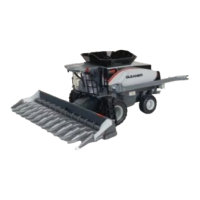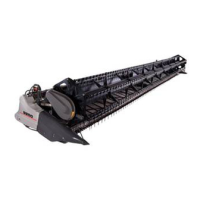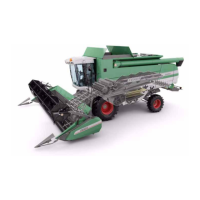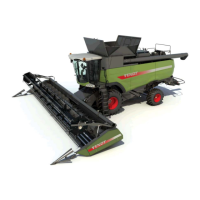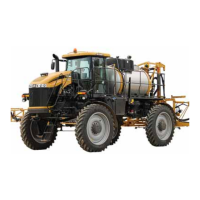OPERATION
PRIMARY TILLAGE
•
The Soil Saver
is a primary tillage tool that
works best when no other tillage operation is
performed immediately beforehand. The slicers
require a firm surface to cut residue, so do not
disturb the soil prior to using the implement.
•
If greater incorporation of residue is desired, a
flail or rotary shredder may be used before
tilling to supplement slicer action.
•
The machine loosens the soil to the desired
depth, allowing water penetration into the soil.
During the winter, the ground will freeze deeper
and “weather out” much faster.
•
Using the Soil Saver
leaves a mulch and
residue cover on the surface, preventing soil
surface sealing. Water will be absorbed quickly
into the soil, reducing runoff, evaporation and
soil erosion. The residue cover also reduces
wind erosion.
• Do not till wet, sticky clay-type soils in the
spring. Hard clods will form, making
subsequent operations more difficult.
PREPARATION
• Raise and lower machine and hold tractor
hydraulic valve open several times to fully purge
air from the hydraulic system. Machine should
be level from side-to-side when raised and
lowered.
•
Adjust hitch clevis so machine frame is parallel
to ground and all shanks are cutting the same
depth during operation.
•
Perform all functions listed under “Tractor
Preparation” and “Soil Saver
Preparation.”
TILLING
•
Use the turnbuckle adjustment to determine
shank depth, not the wheels. Operate the
machine with wheels on the ground and wheel
cylinders fully retracted.
Note: With optional electronic DCS3000,
wheels are used to control depth.
•
If cylinders begin to lift unevenly, hold tractor
valve open after implement is raised. When in
operation, fully raise the implement while
turning at each end of the field.
•
On folding models, operate with wing cylinders
fully extended.
TILLING (Cont.)
•
IMPORTANT! When making sharp turns, always
raise shanks and slicers out of the ground.
Sharp turns apply extreme side loads on shanks,
slicers and frame members, causing serious
implement damage.
•
To retard downhill water movement on slopes,
start at the bottom of the slope and work
upwards, parallel to the bottom.
•
Till the field at an angle to the rows to break up
the ridges.
SPEED
•
Typical operating speed range is 3.5 - 6.0 mph
(5.6 - 14.4 km/h).
Note: Better pulverizing action of heavier soils
is accomplished at midrange speeds.
•
If field conditions are adverse, operate at a
slower speed to reduce the possibility of
implement damage.
• If field conditions are too rough to operate at
high speed at the desired depth, make two
passes at an angle to each other. Make the first
pass shallower than the second pass.
• Reduce speed when making turns. Never make
high speed, sharp turns.
DEPTH
•
For spring tilling, keep the machine as shallow
as possible while maintaining satisfactory
residue incorporation.
•
For fall tilling, deeper tillage is more practical,
typically between 8″ -12″ (203 - 305 mm).
SLICERS
•
The slicers cut stalks and residue. If stalk and
residue cutting is not required, fully raise the
slicer gangs and use the implement solely as a
tillage tool.
WARNING! SLICER BLADES ARE SHARP AND
CAPABLE OF CAUSING SEVERE
CUTS.
Note: Refer to ADJUSTMENTS Section for leveling
and depth adjustment information.
16
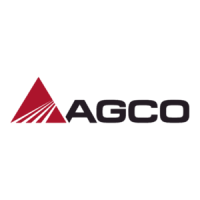
